Yankees' all-time retired numbers
No Major League franchise boasts a richer and more storied history than the Yankees. Appropriately, the 21 numbers that have been removed from circulation to honor 22 of their finest players and managers stand as the most in Major League Baseball.
#1
Born: May 16, 1928 in Berkeley, CA
Died: December 25, 1989 in Binghamton, NY
Height: 5-11, Weight: 165
Threw and batted righthanded
Number retired in 1986
Had as much "Yankee Pride" as any player or manager to wear pinstripes and he implanted his own fierce desire to win in his teams. Played an integral part in four World Series in the 50's as a player, and added another ring managing the Yankees in 1977. His .333 lifetime series batting average is fourth with at least 75 AB on the all-time series list. Combative and daring, Martin was a brilliant baseball strategist and a legend in Yankee history.
#2
Born: June 26, 1974 in Pequannock, NJ
Height: 6-3, Weight: 195
Threw and batted righthanded
Number retired in 2017
The face of baseball for a generation of fans, Jeter played a franchise-record 20 seasons with the Yankees from 1995-2014, retiring with a personal career winning percentage of .593 (1,628-1,117-2) and five World Series rings. A 14-time All-Star, Jeter retired with the sixth-most hits in history (3,465) and played in 16 postseasons.
#3
Born: February 6, 1895 in Baltimore, MD
Died: August 16, 1948 in New York, NY
Height: 6-2, Weight: 215
Threw and batted lefthanded
Number retired in 1948
Baseball's greatest slugger and the most colorful figure in the game's history. Debuted as a pitcher for the Boston Red Sox, winning 89 games over six seasons before being converted to the outfield because of his tremendous power. Was sold to the Yankees for $120,000 in 1920 and his 54 home runs that year were more than any other American-League team.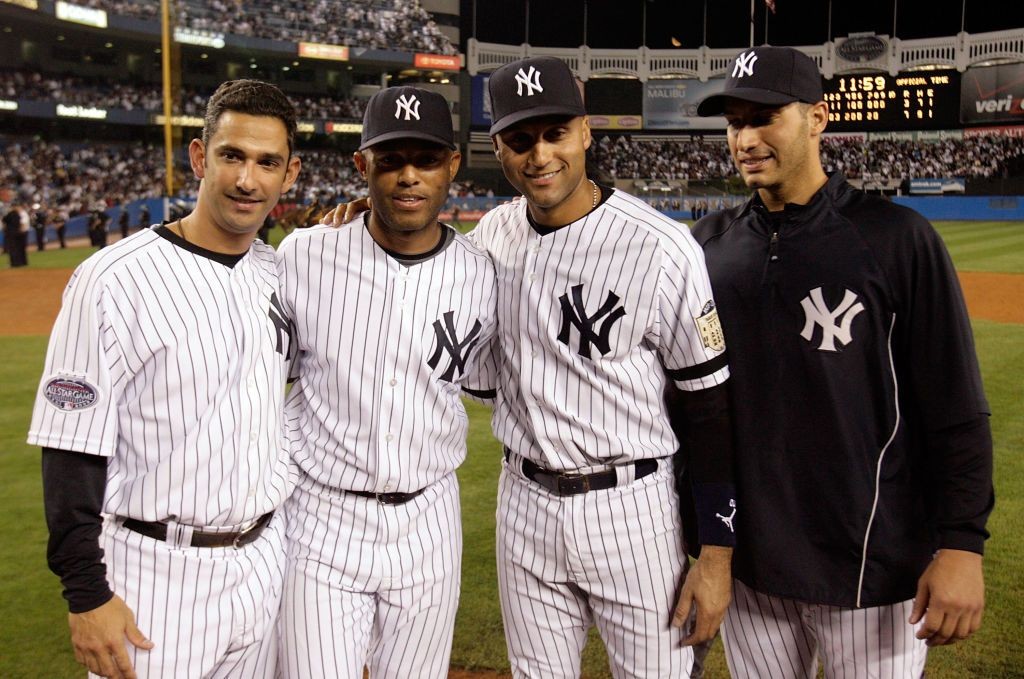 Enroute to 714 career home runs, won 12 home run titles, hitting 60 in 1927. Added 15 home runs in World Series competition as he led the Yankees to seven Series appearances and four World titles. A member of the inaugural class of Hall of Fame inductees in 1936.
Enroute to 714 career home runs, won 12 home run titles, hitting 60 in 1927. Added 15 home runs in World Series competition as he led the Yankees to seven Series appearances and four World titles. A member of the inaugural class of Hall of Fame inductees in 1936.
#4
Born: June 19, 1903 in New York, NY
Died: June 2, 1941 in Riverdale, NY
Height: 6-1, Weight: 212
Threw and batted lefthanded.
Number retired in 1939
Durable, powerhitting first baseman who played in an amazing 2,130 consecutive games between 1925 and 1939. Drove in at least 100 runs for 13 straight seasons (1926-38) and established an American-League record with 184 RBI in 1931. Compiled a .340 lifetime batting average and belted 493 home runs in a career shortened by terminal illness. Was honored at Yankee Stadium on July 4, 1939 and made memorable "Today, I consider myself the luckiest man on the face of the earth" speech. Life was immortalized in classic 1942 motion picture, The Pride of the Yankees, starring Gary Cooper. Elected to the Hall of Fame in 1939.
Elected to the Hall of Fame in 1939.
#5
Born: November 25, 1914 in Martinez, CA
Died: March 8, 1999 in Hollywood, FL
Height: 6-2, Weight: 193
Threw and batted righthanded
Number retired in 1952
The "Yankee Clipper" is considered by many experts as the best all-around baseball player in history. Was a sensational hitter for average and power, a splendid, graceful, ball-hawking center fielder with a powerfully accurate arm and a daring and alert baserunner. Compiled a .325 lifetime batting average from 1936 to 1951. The two-time batting champion and three-time MVP powered the Yankees to the first of four consecutive World Championships in his 1936 rookie season. Many rate his 56-consecutive-game batting streak in 1941 as the top baseball feat of all time. Elected to the Hall of Fame in 1955.
#6
Born: July 18, 1940 in Brooklyn, NY
Height: 6-2, Weight: 212
Threw and batted righthanded
Number retired in 2014.
Joe Torre managed the Yankees to 1,173 regular season wins between 1996 and 2007. His teams compiled a 76-47 record over 12 consecutive postseason appearances. Torre guided the Bronx Bombers to 10 division titles, six American League pennants, and World Series championships in 1996, 1998, 1999, and 2000. Inside the clubhouse, Torre's calm demeanor maintained stability and minimized distractions. He related to players with honesty, respect, and fairness. The Brooklyn native earned American League Manager of the Year honors in 1996 and 1998.
#7
Born: October 20, 1931 in Spavinaw, OK
Died: August 14, 1995 in Dallas, TX
Height: 6-0, Weight: 201
Threw right and switch hit
Number retired in 1969
"The Mick" was the most feared hitter on the most successful team in history. In his best seasons, and there were many, Mantle was simply a devastating player. He could run like the wind and hit tape measure homers, like his famous 565-footer in Washington in 1953.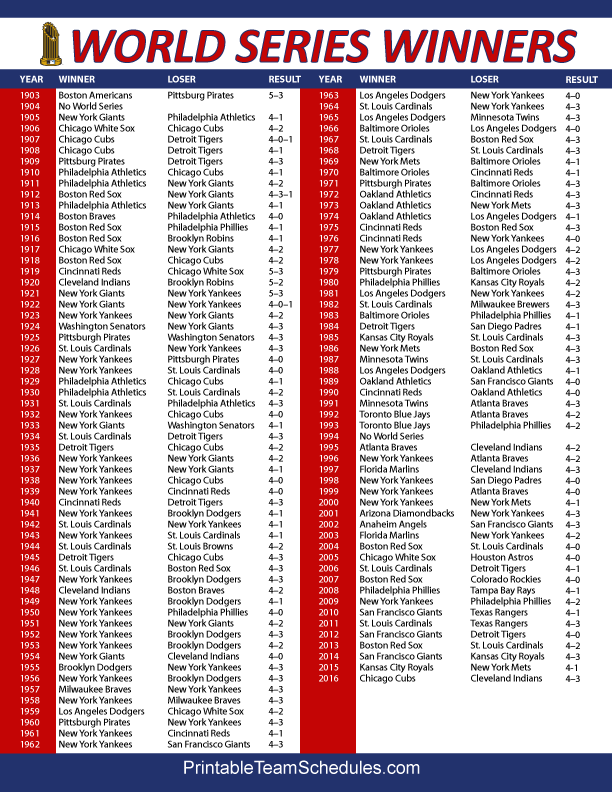 He led the Yanks to 12 fall classics in 14 years, and seven World Championships. He still owns records for most homers, RBI, runs, walks, and strikeouts in World Series play. In 1956, Mantle had one of the greatest seasons ever at the plate. He hit 52 homers with 130 RBI and a .353 average to win the Triple Crown. Mantle was elected to the Hall of Fame in 1974. Beginning with Lou Gehrig's number 4 in 1939, the Yankees have retired 15 uniform numbers to honor 16 players and managers.
He led the Yanks to 12 fall classics in 14 years, and seven World Championships. He still owns records for most homers, RBI, runs, walks, and strikeouts in World Series play. In 1956, Mantle had one of the greatest seasons ever at the plate. He hit 52 homers with 130 RBI and a .353 average to win the Triple Crown. Mantle was elected to the Hall of Fame in 1974. Beginning with Lou Gehrig's number 4 in 1939, the Yankees have retired 15 uniform numbers to honor 16 players and managers.
#8
Born: May 12, 1925 in St. Louis, MO
Died: September 22, 2015 in West Caldwell, NJ
Height 5-8, Weight: 191.
Threw righthanded and batted lefthanded.
Number retired in 1972.
A mainstay for the most dominating teams in history, the Yankee that played from the end of World War II until the early 1960's. Although he never led the league in a single major offensive category, he was just the third man to win three Most Valuable Player awards. Selected to play in 15 successive All-Star games.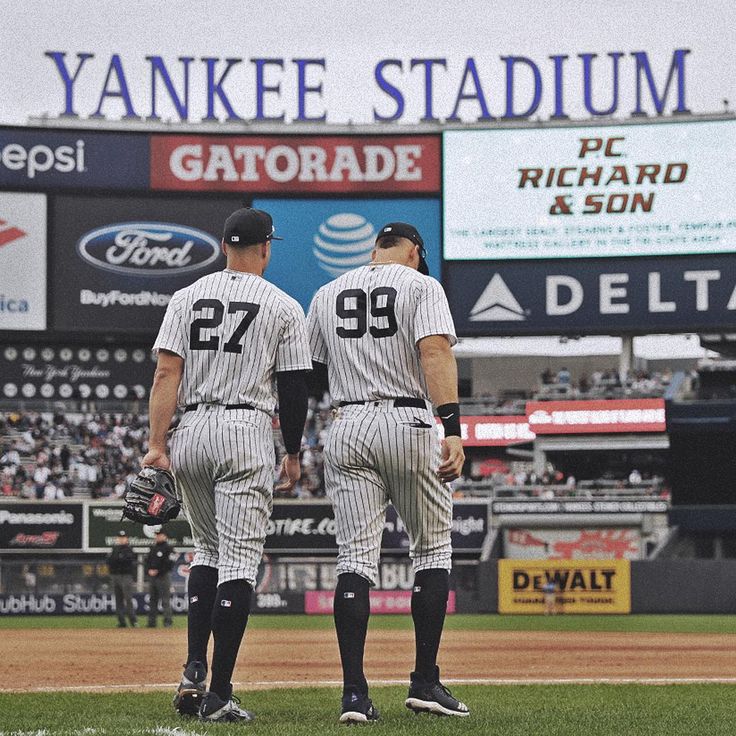 Played on 14 pennant winners and 10 World Champions, more than anyone in history. Led Yankees to the 1964 pennant as manager. Elected to the Hall of Fame in 1972.
Played on 14 pennant winners and 10 World Champions, more than anyone in history. Led Yankees to the 1964 pennant as manager. Elected to the Hall of Fame in 1972.
#8
Born: June 6, 1907 in Bastrop, LA
Died: November 12, 1993
Height: 6-1, Weight: 185
Threw righthanded and batted lefthanded
Number retired in 1972
Regarded as one of the greatest catchers of all-time. A durable and tireless worker, he caught more than 100 games in 13 consecutive seasons (1929-41), an American-League record. He did not allow a single passed ball in 125 games behind the plate, another AL record. Dickey also excelled at the plate, batting over .300 in 10 of his first 11 seasons while hitting 202 homers during his career. He handled Yankee pitching staffs on eight World Series teams, winning seven championships.
#9
Born: September 10, 1934 in Hibbing, MN
Died: December 14, 1985 in Houston, TX
Height: 6-0, Weight: 197
Batted lefthanded and threw righthanded
Number retired in 1984
In one of the most dramatic assaults on a baseball record, Maris caught, then surpassed Babe Ruth's famous home run record of 60. In 1961, Maris hit 61 home runs, a Major-League record which stood until 1998 and still the American-League mark.The two-time American League MVP (1960-'61) is also considered as one of the best fielding right fielders in Yankee history.
In 1961, Maris hit 61 home runs, a Major-League record which stood until 1998 and still the American-League mark.The two-time American League MVP (1960-'61) is also considered as one of the best fielding right fielders in Yankee history.
#10
Born: September 25, 1917 in New York, NY
Died: August 13, 2007 in West Orange, NJ
Height: 5-6, Weight 150.
Threw and batted righthanded
Number retired in 1985
Playing 13 years for the Yanks, "Scooter" went to the World Series in 10 of those seasons. That stat may best explain why the diminutive shortstop is regarded as a true Yankee legend. He was a durable, outstanding shortstop, skilled bunter and enthusiastic baserunner with a solid .273 lifetime batting average. In 1950 Rizzuto earned the A.L. MVP Award, batting .324 with 200 hits, 92 bases on balls, and 125 runs scored. He batted .320 in the 1951 World Series and was named Series' MVP. Spent 40 years as a Yankee broadcaster (1957-96).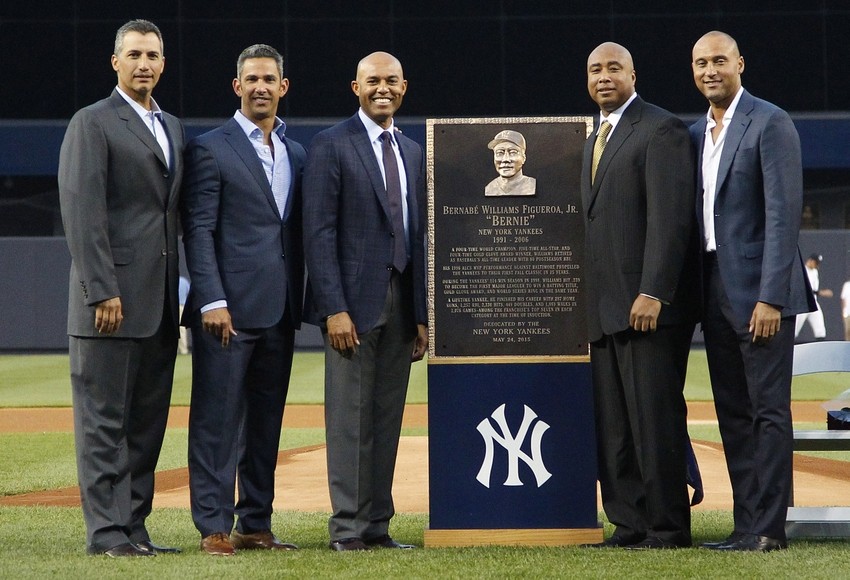 Elected to the Hall of Fame in 1995.
Elected to the Hall of Fame in 1995.
#15
Born: June 7, 1947 in Akron, OH
Died: August 2, 1979 in Canton, OH
Height: 5-11, Weight: 190
Batted and threw righthanded
Number retired in 1979
Was the undisputed leader and most respected man on the Yankee teams that won three AL pennants in a row (1976- 78) and two World Championships. Munson was a tremendous defensive catcher, winning the Gold Glove Award in three consecutive seasons (1973-75). From 1975-77, Thurman drove in more than 100 runs and hit better than .300 in each of those three seasons. He hit the first Yankee home run in the "new" Yankee Stadium. There is no more tragic date in Yankee history than August 2, 1979. On that date Munson passed away when the plane he was flying crashed while landing.
#16
Born: October 21, 1928 in New York, NY
Height: 5-10, Weight: 181
Threw and batted lefthanded.
Number retired in 1974.
"The Chairman of the Board" was the ace pitcher on the great Yankee teams of the 1950's and early 60's. The wily southpaw's lifetime record of 236-106 gives him the best percentage (.690) of any 20th century pitcher. He paced the American League in victories three times, and in ERA and shutouts twice. The 1961 Cy Young Award winner still holds many World Series records, including 10 wins, 33 consecutive scoreless innings and 94 strikeouts. Elected to the Hall of Fame in 1974.
#20
Born: August 17, 1971 in Santurce, P.R.
Height: 6-2, Weight: 215
Threw right and switch hit.
Number retired in 2015.
One of the best-hitting catchers of his era, Posada spent each of his 17 Major League seasons with the Yankees, batting .273 with 379 doubles, 275 homers, 1,065 RBI, a .374 OBP and .848 OPS in 1,829 games from 1995-2011. A player on five World Series winners (1996, '98, '99, 2000, '09), Posada was also a five-time All-Star and five-time Silver Slugger winner. He is one of just six catchers all time to have at least 11 seasons of 17-or-more home runs.
He is one of just six catchers all time to have at least 11 seasons of 17-or-more home runs.
#21
Born: February 25, 1963 in Columbus, OH
Height: 6-4, Weight: 200
Threw and batted lefthanded
Number retired in 2022.
O'Neill's warrior persona galvanized the Yankees from 1993 to 2001. With a .303 batting average and 858 RBI during his time in the Bronx, the right fielder brought an intensity and reliability that helped lift the Yankees to four World Series titles. A four-time All-Star while wearing the pinstripes, O'Neill won the AL batting title in 1994 with a .359 average. In 2001, he became the first 38-year-old in Major League history to steal 20 bases and hit 20 home runs in the same season.
#23
Born: April 20, 1961 in Evansville, IN
Height: 6-0, Weight: 185
Batted and threw lefthanded
Number retired in 1997
"Donnie Baseball" was only the 10th captain to be named by the Yankees in their storied history.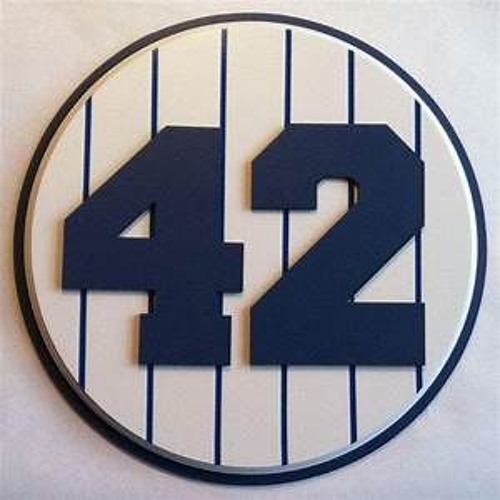 The premier first baseman of his era, Mattingly was a nine-time Gold Glove winner. The 1985 American League MVP set records for most grand slams in a season (6), most home runs in seven consecutive games (9) and eight consecutive games (10). A humble man of grace and dignity, Mattingly carried on the legacy of the pinstripe tradition and dedicated his career to the pursuit of excellence.
The premier first baseman of his era, Mattingly was a nine-time Gold Glove winner. The 1985 American League MVP set records for most grand slams in a season (6), most home runs in seven consecutive games (9) and eight consecutive games (10). A humble man of grace and dignity, Mattingly carried on the legacy of the pinstripe tradition and dedicated his career to the pursuit of excellence.
#32
Born: February 23, 1929 in St. Louis, MO
Died: December 14, 1980 in New York, NY
Height: 6-2, Weight: 196
Batted and threw righthanded
Number retired in 1984.
Became the first black player in Yankee history when he made the club in the spring of 1955. The versatile two-time Gold Glove catcher was an important member of the A.L. pennant-winning Yankee teams in nine of his first ten seasons with the club. The 1963 American League MVP, Howard was a clubhouse leader who was respected as both a player and a man. Howard's dignified manner off the field and competitive spirit on the field were positive influences on the Yankee team.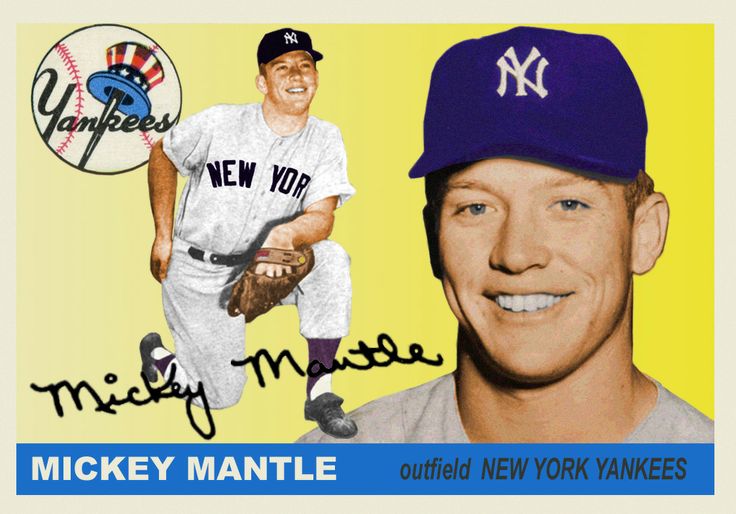
#37
Born: July 30, 1889 in Kansas City, MO
Died: September 29, 1975 in Glendale, CA
Number retired in 1970
In a distinguished 54-year professional career, "The Old Professor" emerged as one of the game's greatest managers. His feat of guiding the Yankees to 10 pennants and seven world titles in a 12-year span ranks as the top managerial accomplishment of all time. Simply put, Casey Stengel was one of the best things to ever happen to the game of baseball. He was an authentic baseball ambassador, making the game fun for millions of Americans. Elected to the Hall of Fame in 1966.
#42
In 1947, Jackie Robinson became the first African American man to play in the Major Leagues. His number retired throughout baseball in 1997. Played for Brooklyn Dodgers from 1947-56. From his Baseball Hall of Fame Plaque: "Leading NL batter in 1949. Holds fielding mark for second baseman playing in 150 or more games with .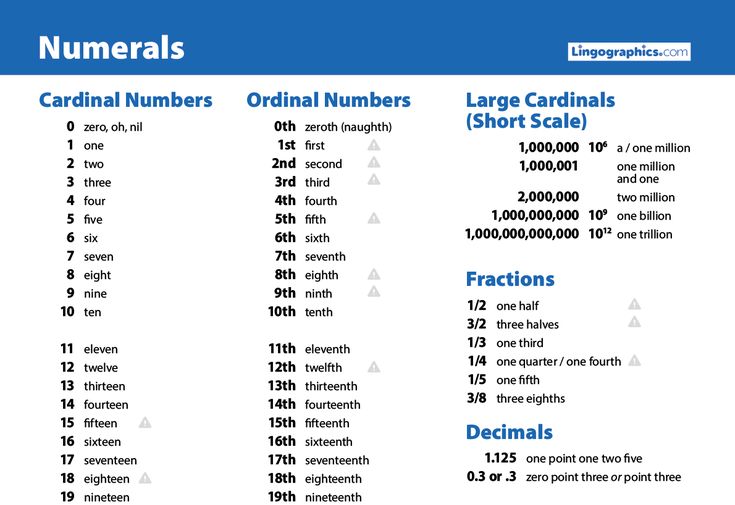 992. Led NL in stolen bases in 1947 and 1949. Most Valuable Player in 1949. Lifetime batting average .311. Joint record holder for most double plays by second baseman, 137 in 1951. Led second baseman in double plays 1949-50-51-52.
992. Led NL in stolen bases in 1947 and 1949. Most Valuable Player in 1949. Lifetime batting average .311. Joint record holder for most double plays by second baseman, 137 in 1951. Led second baseman in double plays 1949-50-51-52.
#42
Born: November 29, 1969 in Panama City, Panama
Height: 6-2, Weight: 195.
Threw and batted righthanded.
Number retired in 2013
Mariano Rivera defined ninth-inning excellence. His signature cut fastball shattered bat handles and stifled rallies over 19 seasons. Regarded for consistent success and an unflappable demeanor, Rivera pitched his entire career in a Yankees uniform. "Mo" appeared in 1,115 regular season games and compiled a major league-record 652 saves. Rivera's star shone brightest in October competition. He established postseason records with 96 games pitched, 42 saves, and a 0.70 ERA. Rivera retired as the last major league player to wear uniform number 42.
#44
Born: May 18, 1946 in Wyncote, PA
Height: 5-10, Weight: 181.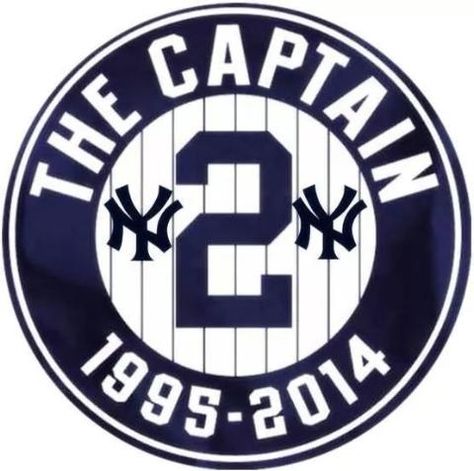
Threw and batted lefthanded.
Number retired in 1993.
One of the game's premier power hitters, "Mr. October" blasted 563 career roundtrippers, sixth all-time. In Game Six of the 1977 World Series, Jackson hit three home runs, all on the first pitch, as the Yankees beat the Dodgers to wrap up the club's first World Championship since 1962. Jackson was an exciting clutch player and an intimidating cleanup hitter with a .490 career slugging percentage. The 1973 American League MVP once said, "Some people call October a time of pressure. I call it a time of character." Elected to the Hall of Fame in 1993.
#46
Born: June 15, 1972 in Baton Rouge, LA
Height: 6-5, Weight: 225.
Threw and batted lefthanded.
Number retired in 2015.
Reliable and consistent throughout his career, Pettitte pitched 15 seasons with the club (1995-2003, '07-10, '12-13), going 219-127 with a 3.94 ERA (447G/438GS, 2,796.1IP, 2,020K). The left-hander is the franchise leader in strikeouts and tied with Whitey Ford for the most starts. He trails only Ford (236 wins, 3,171.0IP) and Red Ruffing (231 wins, 3,168.0IP) in wins and innings pitched. A three-time AL All-Star (1996, 2001 and '10), Pettitte is the only pitcher drafted by the Yankees to win 200 games in the Majors. As a Yankee, Pettitte went 18-10 with a 3.76 ERA (251.1IP, 105ER) in 40 career postseason starts, winning five World Series titles (1996, '98-99, 2000, '09). He famously started and won all three series-clinching games in the 2009 postseason.
He trails only Ford (236 wins, 3,171.0IP) and Red Ruffing (231 wins, 3,168.0IP) in wins and innings pitched. A three-time AL All-Star (1996, 2001 and '10), Pettitte is the only pitcher drafted by the Yankees to win 200 games in the Majors. As a Yankee, Pettitte went 18-10 with a 3.76 ERA (251.1IP, 105ER) in 40 career postseason starts, winning five World Series titles (1996, '98-99, 2000, '09). He famously started and won all three series-clinching games in the 2009 postseason.
#49
Born: August 28, 1950 in Lafayette, LA
Height: 5-11, Weight: 165
Threw and batted left-handed
Number retired in 2003.
Won 20 games three times, in 1978 (25-3), 1983 (21-9) and 1985 (22-6). Compiled one of the most dominating seasons in baseball history in 1978 and became known as "Louisiana Lightning." He went 25-3 with a 1.74 earned run average in leading the Yankees to a dramatic comeback-from 14.0 games behind the Boston Red Sox-to capture their second straight World Championship.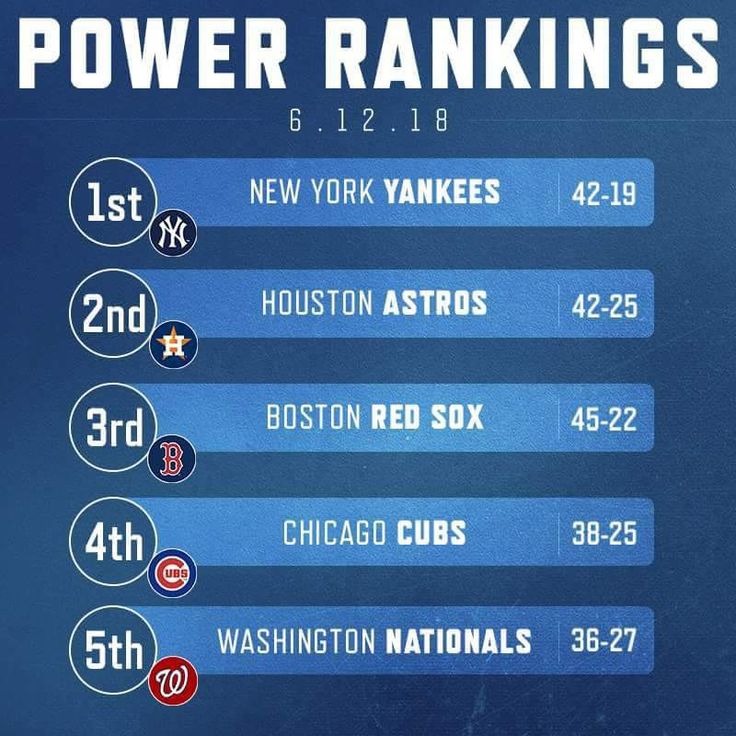 In 1978, he compiled a club-record 248 strikeouts and nine shutouts en route to a unanimous selection as the American League's Cy-Young-Award recipient. On June 17, 1978 vs. the California Angels at Yankee Stadium, Guidry shattered the club's single-game record for strikeouts with 18. The Yankees' co-captain-with Willie Randolph-from 1986 through his retirement in 1989, he remains in the Top 10 on the Yankees' all-time list in games pitched (368), innings pitched (2392.0), wins (170), winning percentage (.651), strikeouts (1778) and shutouts (26). A four-time American-League All-Star.
In 1978, he compiled a club-record 248 strikeouts and nine shutouts en route to a unanimous selection as the American League's Cy-Young-Award recipient. On June 17, 1978 vs. the California Angels at Yankee Stadium, Guidry shattered the club's single-game record for strikeouts with 18. The Yankees' co-captain-with Willie Randolph-from 1986 through his retirement in 1989, he remains in the Top 10 on the Yankees' all-time list in games pitched (368), innings pitched (2392.0), wins (170), winning percentage (.651), strikeouts (1778) and shutouts (26). A four-time American-League All-Star.
#51
Born: September 13, 1968 in San Juan, P.R.
Height: 6-2, Weight: 205
Threw right and switch hit.
Number retired in 2015.
Williams played his entire 16-year Major League career with the Yankees (1991-2006), batting .297 (2,336-for-7,869) with 449 doubles, 278 home runs and 1,257 RBI in 2,076 games. A five-time AL All-Star (1997-2001), four-time Gold Glove winner (1997-2000) and Silver Slugger Award recipient (2002), Williams won the AL batting title in 1998 with a . 339 average. A four-time World Series champion (1996, '98, '99, 2000), he is the Yankees' all-time postseason leader in HR (22) and RBI (80) and ranks third in games played (121). He was named the 1996 ALCS MVP after batting .474 (9-for-19) with two homers and six RBI in the Yankees' five-game win vs. the Orioles. In Game 1 of the 1999 ALCS vs. Boston, he hit a memorable 10th-inning, "walk-off" home run.
339 average. A four-time World Series champion (1996, '98, '99, 2000), he is the Yankees' all-time postseason leader in HR (22) and RBI (80) and ranks third in games played (121). He was named the 1996 ALCS MVP after batting .474 (9-for-19) with two homers and six RBI in the Yankees' five-game win vs. the Orioles. In Game 1 of the 1999 ALCS vs. Boston, he hit a memorable 10th-inning, "walk-off" home run.
December 1st, 2021
Bryan Hoch
@BryanHochNo Major League franchise boasts a richer and more storied history than the Yankees. Appropriately, the 21 numbers that have been removed from circulation to honor 22 of their finest players and managers stand as the most in Major League Baseball.
Lou Gehrig's No. 4 was the first retired number in Major League history, shelved on Jan. 6, 1940, via an announcement from team president Ed Barrow. Some 77 years later, Derek Jeter's No. 2 became the last of the Bombers' single digits to disappear from use.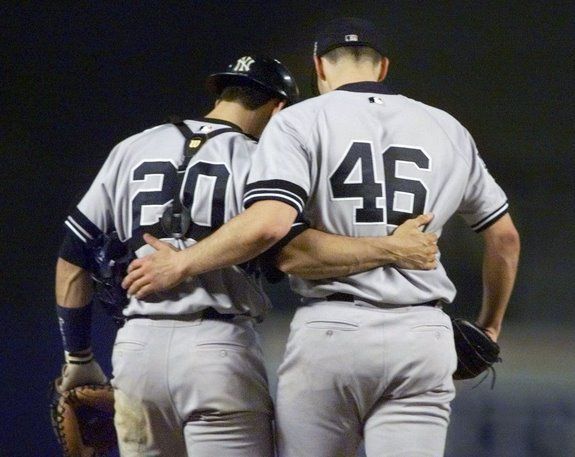
Displayed in Monument Park at Yankee Stadium, the retired numbers represent a "who's who?" of sports history, belonging to the greatest of the great. Hall of Famers mingle with fan favorites across different eras, all of whom helped the Yankees' brand become synonymous with success.
Billy Martin, 2B/Manager, No. 1
Number retired: Aug. 10, 1986
Martin had as much "Yankees pride" as any player or manager to wear pinstripes, and he implanted his fierce desire to win in his teams. He played an integral part in four World Series in the 1950s as a player and added another ring managing the Yanks in '77. Martin had five stints managing the club.
Derek Jeter, SS, No. 2
Number retired: May 14, 2017
The face of baseball for a generation of fans, Jeter played a franchise-record 20 seasons with the Yankees from 1995-2014, retiring with a personal career winning percentage of .593 (1,628-1,117-2) and five World Series rings. A 14-time All-Star, Jeter retired with the sixth-most hits in history (3,465) and played in 16 postseasons.
A 14-time All-Star, Jeter retired with the sixth-most hits in history (3,465) and played in 16 postseasons.
Babe Ruth, RF, No. 3
Number retired: June 13, 1948
Many consider Ruth the most colorful figure in the game's history. Sold to the Yankees in 1920, his 54 home runs that year were more than any other American League team. En route to 714 career homers, Ruth won 12 home run titles, including slugging 60 in 1927. Part of the inaugural Hall of Fame class of 1936, the Bambino added 15 homers in World Series play, leading the Yanks to seven Series appearances and four titles.
Lou Gehrig, 1B, No. 4
Number retired: Jan. 6, 1940
Gehrig was a uniquely durable, power-hitting first baseman who played in 2,130 consecutive games from 1925-39. In a career shortened by terminal illness, Gehrig compiled a .340 batting average with 493 home runs, two AL MVP Awards and the 1934 Triple Crown. Gehrig was honored at Yankee Stadium on July 4, 1939, when he made his memorable "Luckiest Man" speech, and was elected to the Hall of Fame in 1939.
Joe DiMaggio, CF, No. 5
Number retired: April 18, 1952
"The Yankee Clipper" is considered by many experts as the best all-around player in history. The California native was a sensational hitter for both average and power, and a splendid, graceful ball-hawking center fielder with a powerful and accurate arm. A two-time batting champion and three-time AL MVP Award winner, DiMaggio compiled a .325 lifetime batting average from 1936-51 and powered the Yankees to nine World Series titles despite losing three years (1943-45) to military service. Many rate his 56-game hitting streak in 1941 as the top baseball feat of all time. DiMaggio was elected to the Hall of Fame in 1955.
Joe Torre, Manager, No. 6
Number retired: Aug. 23, 2014
A calming influence in the clubhouse who had a stoic outward expression in the dugout, Torre piloted the Yankees to six World Series appearances and four championships during his tenure from 1996-2007.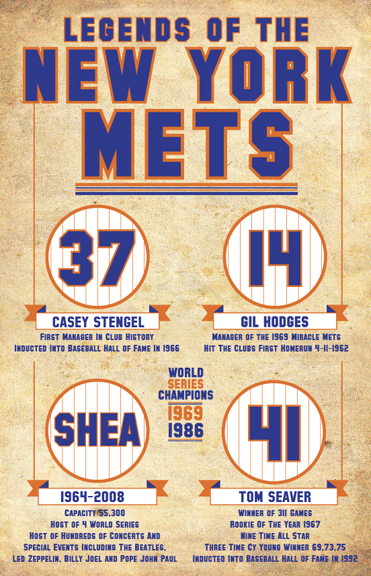 The 2014 Hall of Famer led the club to the playoffs in all 12 of his seasons at the helm, going 1,173-767-2 (.605) in the regular season and 76-47 (.618) in the postseason, including a 21-11 mark in the World Series.
The 2014 Hall of Famer led the club to the playoffs in all 12 of his seasons at the helm, going 1,173-767-2 (.605) in the regular season and 76-47 (.618) in the postseason, including a 21-11 mark in the World Series.
Get the Latest From MLB
Sign up to receive our daily Morning Lineup to stay in the know about the latest trending topics around Major League Baseball.
Mickey Mantle, CF, No. 7
Number retired: June 8, 1969
"The Mick" was the most feared hitter on some of the most successful teams in history. In 14 seasons between 1951-64, he led the Yanks to 12 Fall Classics and seven championships. In 1956, Mantle had one of the greatest offensive seasons ever, winning the Triple Crown by hitting .353 with 52 homers and 130 RBIs. A three-time AL MVP Award winner, he was elected to the Hall of Fame in 1974.
Yogi Berra, C/Manager, No. 8
Number retired: July 22, 1972
Beloved by generations of fans, Berra was part of the foundation of the Yankees' dominance from the end of World War II through the early 1960s.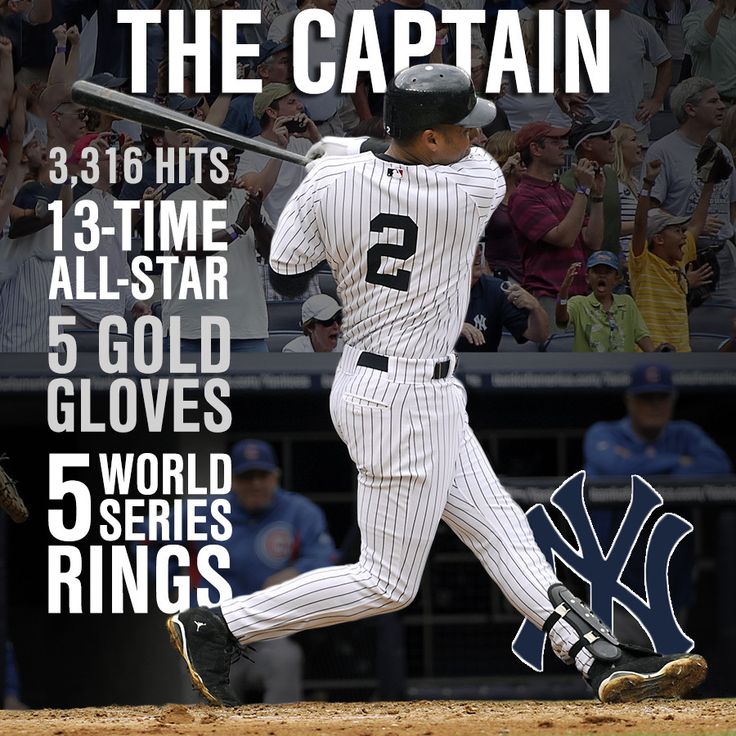 A three-time AL MVP Award winner who won an all-time record 10 World Series rings, Berra was selected to play in the All-Star Game in 15 successive seasons from 1948-62 and played on 14 pennant winners. He led the Yanks to the 1964 pennant as manager and was elected to the Hall of Fame in 1972.
A three-time AL MVP Award winner who won an all-time record 10 World Series rings, Berra was selected to play in the All-Star Game in 15 successive seasons from 1948-62 and played on 14 pennant winners. He led the Yanks to the 1964 pennant as manager and was elected to the Hall of Fame in 1972.
Bill Dickey, C, No. 8
Number retired: July 22, 1972
Regarded as one of the greatest catchers of all time, Dickey was a durable and tireless worker, catching more than 100 games in an AL-record 13 consecutive seasons (1929-41). Dickey also excelled as a hitter, batting over .300 in 10 of his first 11 full seasons and hitting 202 homers during his career. He handled Yankees pitching staffs on eight World Series teams, winning seven championships. He was elected to the Hall of Fame in 1954.
Roger Maris, RF, No. 9
Number retired: July 21, 1984
In one of the most dramatic assaults on a baseball record, Maris surpassed Ruth's single-season record of 60 home runs on the final day of the 1961 season.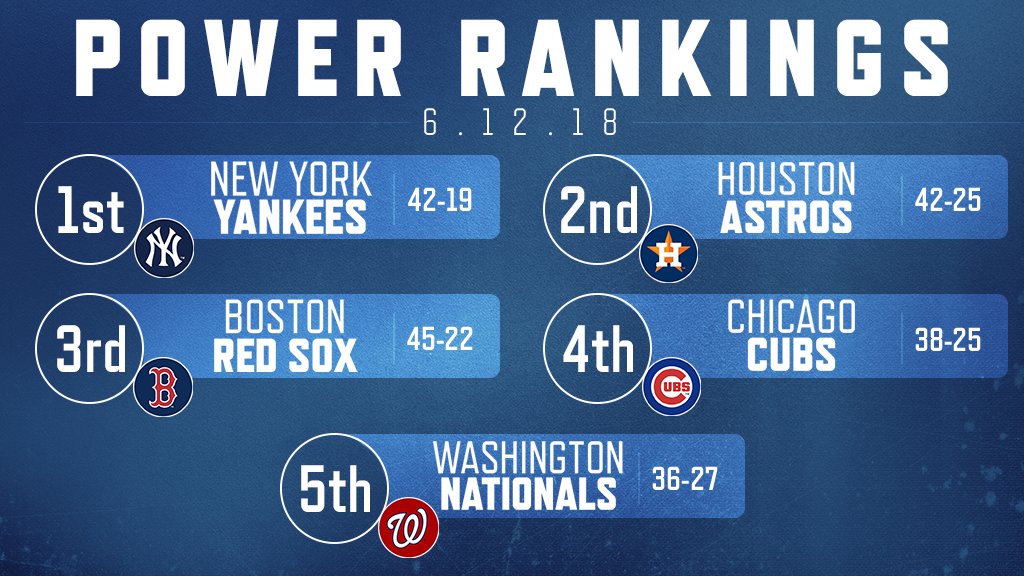 Maris' 61 homers that season stood as a Major League record until 1998. A two-time AL MVP Award winner (1960-61), Maris is considered one of the best defensive right fielders in Yankees history.
Maris' 61 homers that season stood as a Major League record until 1998. A two-time AL MVP Award winner (1960-61), Maris is considered one of the best defensive right fielders in Yankees history.
Phil Rizzuto, SS, No. 10
Number retired: Aug. 4, 1985
Playing 13 years for the Yankees, the "Scooter" went to nine World Series, winning seven. Diminutive yet tough, he was a skilled bunter and baserunner with a .273 career average. Rizzuto earned the 1950 AL MVP Award. He also spent 40 years as a Yanks broadcaster (1957-96), tossing around his signature phrase, "Holy cow!" Rizzuto was elected to the Hall of Fame in 1994.
Thurman Munson, C, No. 15
Number retired: Aug. 3, 1979
Munson was the undisputed leader of the Yankees teams that won three consecutive AL pennants from 1976-78 and two World Series championships. A tremendous defensive catcher, Munson won three straight Gold Glove Awards (1973-75) and the 1976 AL MVP Award. In each season from 1975-77, Munson drove in 100 or more runs and hit better than .300. There is no more tragic date in Yanks history than Aug. 2, 1979, when Munson died in a plane crash at age 32.
In each season from 1975-77, Munson drove in 100 or more runs and hit better than .300. There is no more tragic date in Yanks history than Aug. 2, 1979, when Munson died in a plane crash at age 32.
Whitey Ford, LHP, No. 16
Number retired: Aug. 3, 1974
"The Chairman of the Board" was the ace of the great Yankees teams of the 1950s and early '60s. With a lifetime record of 236-106, Ford paced the AL in victories three times and in ERA and shutouts twice. The 1961 Cy Young Award winner still holds several World Series records, including 10 wins, 33 consecutive scoreless innings and 94 strikeouts. He was elected to the Hall of Fame in 1974.
Jorge Posada, C, No. 20
Number retired: Aug. 22, 2015
One of the best-hitting catchers of his era, Posada spent each of his 17 seasons with the Yankees from 1995-2011, batting .273 with 379 doubles, 275 homers, 1,065 RBIs, a .374 OBP and an .848 OPS in 1,829 games.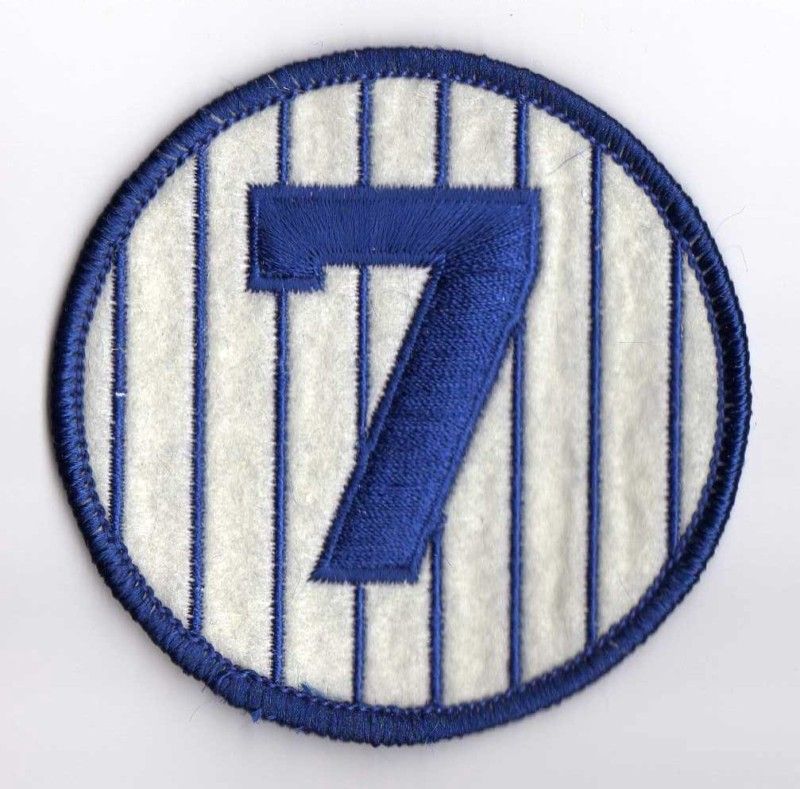 A player on four World Series-winning squads, Posada was a five-time All-Star and a five-time Silver Slugger recipient.
A player on four World Series-winning squads, Posada was a five-time All-Star and a five-time Silver Slugger recipient.
Don Mattingly, 1B, No. 23
Number retired: Aug. 31, 1997
Respected for his talent, professionalism and humility, "Donnie Baseball" was the premier first baseman of the mid-1980s before back problems robbed him of much of his power at age 29. Nevertheless, he remained the most loved Yankee of his era and a defensive star, tallying nine Gold Gloves in his 14 years in pinstripes (1982-95). The "Hit Man" won the 1984 AL batting title (.343) and the 1985 AL MVP Award.
Elston Howard, C, No. 32
Number retired: July 21, 1984
The first African-American player in Yankees history, the versatile Howard contributed to nine AL pennant-winning teams in his first 10 seasons with the club. The 1963 AL MVP Award winner and a two-time Gold Glove Award winner, Howard was elected to the All-Star Game in nine consecutive seasons (1957-65). A clubhouse leader as a player from 1955-67 and as a Yanks coach from 1969-79, his dignified manner and competitive spirit set a powerful example.
A clubhouse leader as a player from 1955-67 and as a Yanks coach from 1969-79, his dignified manner and competitive spirit set a powerful example.
Casey Stengel, Manager, No. 37
Number retired: Aug. 8, 1970
In a distinguished 54-year professional career, "The Old Perfessor" became one of the game's greatest managers. His feat of guiding the Yankees to 10 pennants and seven titles in a 12-year span from 1949-60 ranks as one of the top managerial accomplishments of all time. Stengel was an authentic baseball ambassador, making the game fun for millions of Americans. He was elected to the Hall of Fame in 1966.
Mariano Rivera, RHP, No. 42
Number retired: April 15, 1997 by MLB; Yankees recognized Rivera on Sept. 22, 2013
The all-time leader with 652 career saves, Rivera compiled an impressive 2.21 career ERA over a 19-year career from . "The Sandman's" postseason dominance was legendary, setting Major League records with 42 postseason saves, a 0.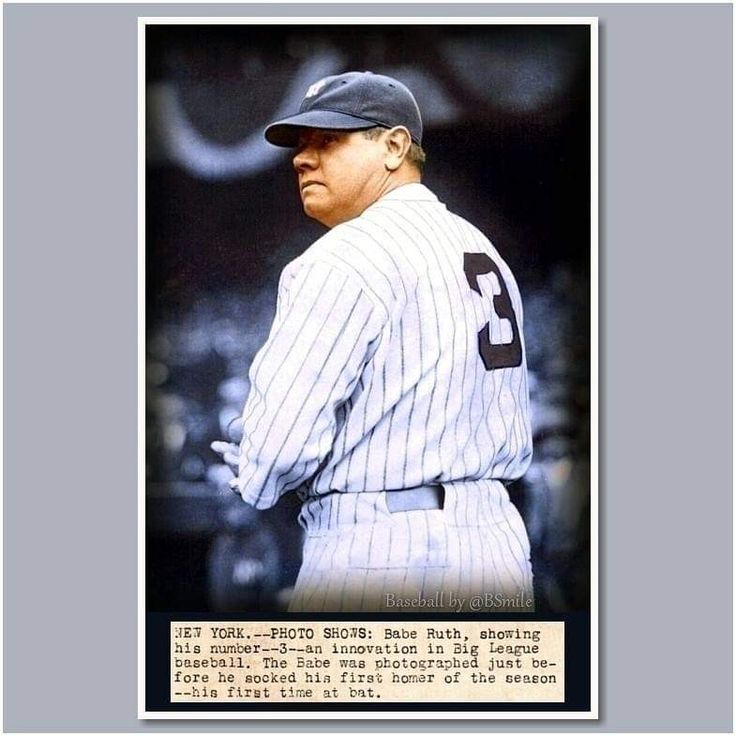 70 ERA (min. 30 innings) and 96 appearances. He won five World Series championships and appeared in two other Fall Classics.
70 ERA (min. 30 innings) and 96 appearances. He won five World Series championships and appeared in two other Fall Classics.
Reggie Jackson, RF, No. 44
Number retired: Aug. 14, 1993
"Mr. October" blasted 563 career home runs, including 144 as a Yankee from 1977-81. In Game 6 of the 1977 World Series, Jackson hit three homers -- all on the first pitch -- as the Yankees secured their first championship since 1962. He was an All-Star in each of his five seasons in pinstripes and had his best year with the club in 1980, finishing second in the AL MVP Award voting. Jackson was elected to the Hall of Fame in 1993.
Andy Pettitte, LHP, No. 46
Number retired: Aug. 23, 2015
Reliable and consistent, Pettitte pitched 15 seasons with the club, going 219-127 with a 3.94 ERA while setting a franchise mark with 2,020 strikeouts. A three-time AL All-Star, Pettitte is the only pitcher drafted by the Yankees to win 200 games. As a Yankee, Pettitte went 18-10 with a 3.76 ERA in 40 postseason starts, winning five World Series titles. He famously started and won all three series-clinching games in the 2009 postseason.
As a Yankee, Pettitte went 18-10 with a 3.76 ERA in 40 postseason starts, winning five World Series titles. He famously started and won all three series-clinching games in the 2009 postseason.
Ron Guidry, LHP, No. 49
Number retired: Aug. 23, 2003
"Louisiana Lightning" was a four-time All-Star and three-time 20-plus-game winner whose 1978 season was one of the most dominant ever. That year, he went 25-3 with a 1.74 ERA, winning the AL Cy Young Award in unanimous fashion. He also set single-season franchise records with nine shutouts, 248 total strikeouts and 18 strikeouts in a single game (June 17 vs. California). From 1986 through his retirement in 1989, Guidry served as a co-captain with Willie Randolph.
Bernie Williams, CF, No. 51
Number retired: May 24, 2015
Williams played his entire 16-year career with the Yankees (1991-2006), batting .297 with 449 doubles, 278 home runs and 1,257 RBIs in 2,076 games. A five-time AL All-Star, four-time Gold Glove winner and one-time Silver Slugger Award recipient, Williams won the 1998 AL batting title with a .339 average. A four-time World Series champion, he is the Yanks' all-time postseason leader in homers (22) and RBIs (80) and was the MVP of the 1996 ALCS.
A five-time AL All-Star, four-time Gold Glove winner and one-time Silver Slugger Award recipient, Williams won the 1998 AL batting title with a .339 average. A four-time World Series champion, he is the Yanks' all-time postseason leader in homers (22) and RBIs (80) and was the MVP of the 1996 ALCS.
Note: On April 15, 1997, the Yankees joined every MLB team in retiring No. 42 in honor of Jackie Robinson.
The largest US pension funds have retained potentially toxic Russian assets worth $1.5 billion. Their portfolios include OFZs and securities of state companies under sectoral sanctions
Photo: Kirill Kukhmar / TASS
California Public Employees' Retirement System (CalPERS), the largest US pension fund serving almost 2 million current and future pensioners, holds potentially toxic Russian securities (shares of sanctioned companies, government bonds) for more than $1.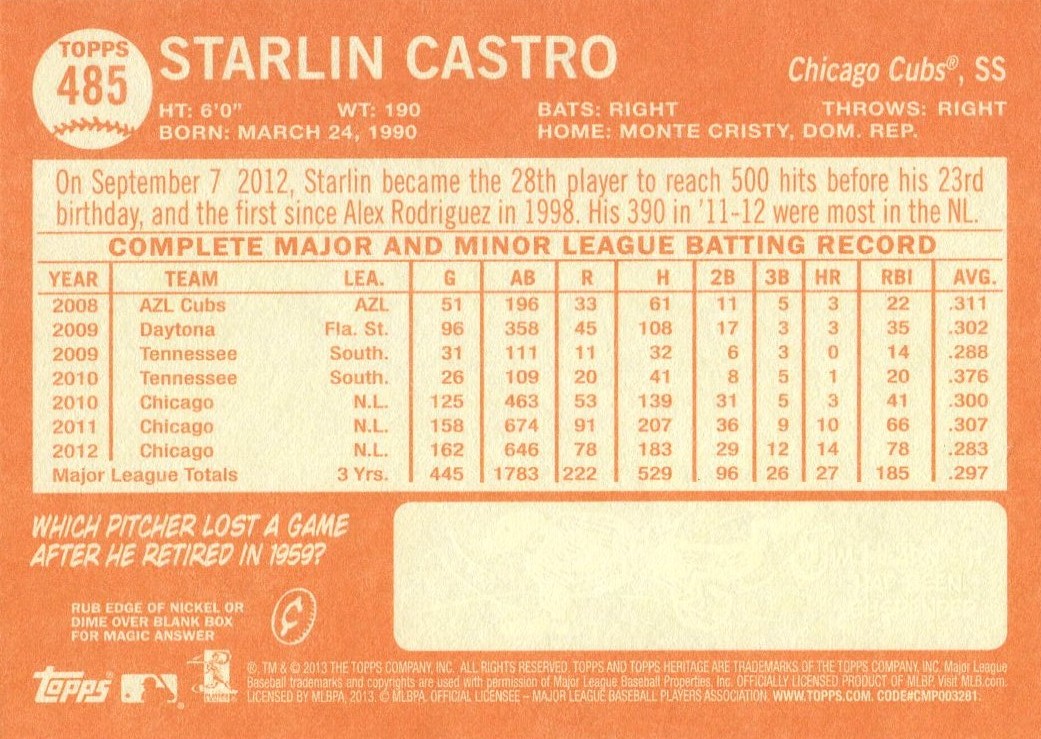 1 billion, the fund disclosed in response to RBC request. The request was sent after a Bloomberg publication, which noted that the tightening of anti-Russian sanctions rhetoric does not prevent CalPERS from keeping part of the pension savings of California firefighters and police officers in Russian government securities. nine0003
1 billion, the fund disclosed in response to RBC request. The request was sent after a Bloomberg publication, which noted that the tightening of anti-Russian sanctions rhetoric does not prevent CalPERS from keeping part of the pension savings of California firefighters and police officers in Russian government securities. nine0003
As of June 30, 2018 (last reporting date), CalPERS held Russian government bonds with a market value of $460.7 million, up from $479 million a year earlier. Of CalPERS' holdings of Russian government bonds, $430 mln came from OFZs and slightly more than $30 mln from Eurobonds.
adv.rbc.ru
The possibility of sanctions against the Russian public debt was discussed in 2017, when the CAATSA law signed by Donald Trump required the US Treasury to study the possible consequences of such sanctions. Although the US Treasury has actually spoken out against restrictions on Russian public debt, congressmen continue to consider several bills containing such sanctions.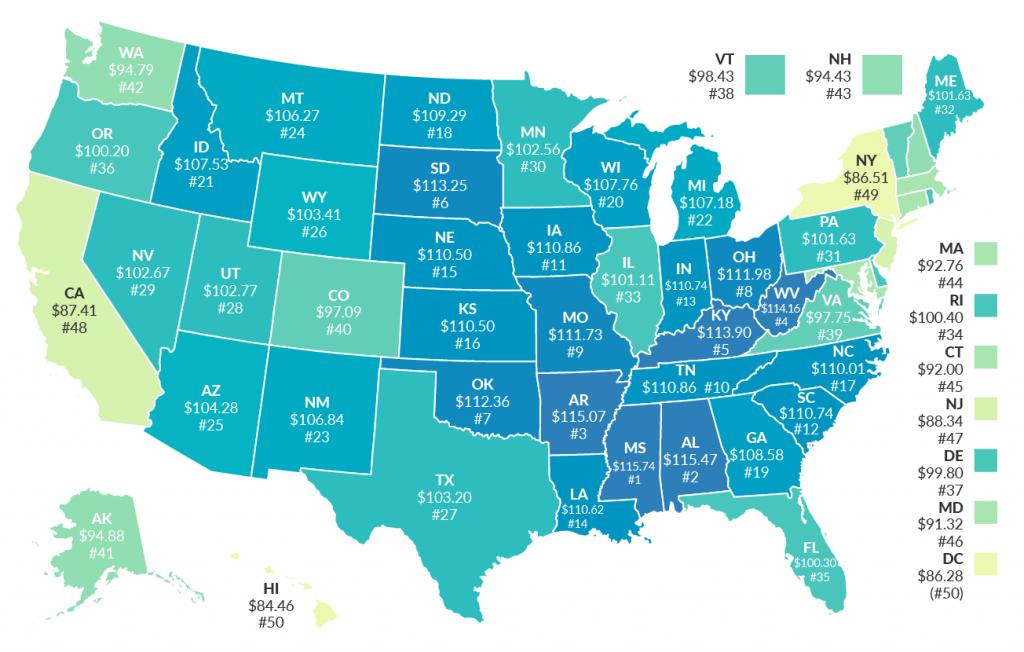 One of them, the “Act to Protect American Security from Kremlin Aggression” (DASKAA), in August 2018 led to the collapse of the ruble and the exit of foreigners from OFZs to a minimum since the end of 2016 (26.6% of the market, according to the Bank of Russia by 1 September). nine0003
One of them, the “Act to Protect American Security from Kremlin Aggression” (DASKAA), in August 2018 led to the collapse of the ruble and the exit of foreigners from OFZs to a minimum since the end of 2016 (26.6% of the market, according to the Bank of Russia by 1 September). nine0003
adv.rbc.ru
It is not known if CalPERS sold Russian paper after June 30th. The Foundation did not provide more recent data.
In addition to Russian government debt, CalPERS holds shares in Russian companies under US sanctions. As of June 30, the fund owned Russian shares (mainly in the form of depositary receipts) for $872 million, of which $658 million were shares of companies from the list of sectoral sanctions (financial and energy), RBC calculated. CalPERS owns securities of sanctioned Russian companies Gazprom, LUKOIL, NOVATEK, Rosneft, Sberbank, VTB and Surgutneftegaz. In particular, the CalPERS portfolio includes shares and ADRs of Sberbank for $238 million and GDRs of VTB Bank for $12. 5 million.
5 million.
Sectoral sanctions do not prohibit US investors from trading previously issued shares of Sberbank and VTB. But the DASKAA bill contains a proposal to freeze the assets of Russian state-owned banks (Sberbank, VTB, Gazprombank, Rosselkhozbank, the state corporation VEB and Promsvyazbank) in US jurisdiction, to isolate them from dollar settlements.
The volume of CalPERS's Russian investments hardly changes from year to year: in 2012 it was about $1.4 billion against $1.3 billion now.
On September 12, at a Senate hearing, Duleep Singh, a former US Treasury official, said that he considered it inappropriate for US pension funds to invest in Russian government debt. “I can’t think of a single worthy argument why US government pension funds or savings organizations should indirectly finance the Russian government, while the latter continues to support violations of American sovereignty,” Singh said at the time. And the former sanctions policy coordinator at the US State Department, Daniel Fried, said in September that the pension funds of Americans should not be connected in any way with Russian companies from the sanctions lists. Of the five largest pension funds in the United States, only one is private, the rest are structures of state and city administrations. nine0003
Of the five largest pension funds in the United States, only one is private, the rest are structures of state and city administrations. nine0003
RBC could not be found among other major US pension funds (except for CalPERS) holding Russian government securities. Shares of sanctioned companies are also in portfolios, for example, the second largest pension fund in America, the California State Teachers’ Retirement System (CalSTRS), which represents the interests of teachers, and the Florida Pension Fund (Florida Retirement System). Thus, in the Russian portfolio of CalSTRS, the largest asset is LUKOIL (shares for $161 million and bonds for $2.5 million). However, these data are given in the public statements of the fund at the end of 2017 - the fund did not respond to RBC's request. nine0003
The Florida fund, the fourth largest in the country, holds $354 million worth of Russian securities as of June 30, 2018, follows from data provided by the fund to RBC. Including - shares of sanctioned companies (NOVATEK, Rosneft, Sberbank, VTB, Gazprom Neft, Gazprom, LUKOIL, Surgutneftegaz, Transneft) for $173.3 million. York (NYSCRF), the third largest in the country, owns $82.7 million worth of Russian shares, according to the fund's report. Securities of sanctioned companies account for $59.3 million of this amount. Calpers manages $340.3 billion in assets, CalSTRS $230.2 billion, New York fund NYCRF $218.5 billion, Florida fund $164.7 billion, New York fund NYCER $64.8 billion
Including - shares of sanctioned companies (NOVATEK, Rosneft, Sberbank, VTB, Gazprom Neft, Gazprom, LUKOIL, Surgutneftegaz, Transneft) for $173.3 million. York (NYSCRF), the third largest in the country, owns $82.7 million worth of Russian shares, according to the fund's report. Securities of sanctioned companies account for $59.3 million of this amount. Calpers manages $340.3 billion in assets, CalSTRS $230.2 billion, New York fund NYCRF $218.5 billion, Florida fund $164.7 billion, New York fund NYCER $64.8 billion
Overall, half of the ten largest foreign holders of Russian OFZs - institutional investors - are US funds, according to Bloomberg. The largest is BlackRock - the investment company owns $2.53 billion worth of Russian bonds. Also among them are Stone Harbor, Goldman Sachs, Legg Mason asset management company. The exact share of American investments in Russian public debt is unknown. nine0003
The Russian authorities have developed measures to protect against possible sanctions against the Russian public debt, said First Deputy Prime Minister Anton Siluanov.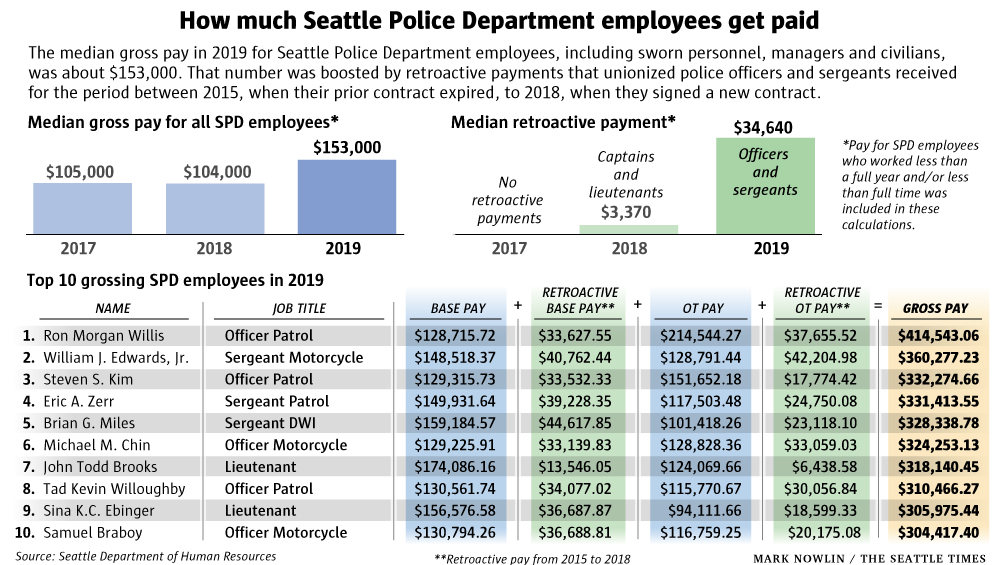 “We will focus on domestic investors, we will use ruble borrowings, we will further develop the financial market, we will use the remaining liquidity of the treasury that we have today and which, in principle, will allow us to finance our deficit in the next and subsequent years,” Siluanov explained. “It is difficult to make assumptions about whether there will be sanctions or not,” it depends, among other things, on the outcome of the upcoming US congressional elections, Siluanov told reporters on October 18. “The main thing for us is to pursue our policy in order to minimize risks,” he stressed. “New sanctions will be introduced every month or two, roughly as they are now,” U.S. Special Representative in Ukraine Kurt Volker promised on the same day, speaking at a conference organized by the Atlantic Council. nine0003
“We will focus on domestic investors, we will use ruble borrowings, we will further develop the financial market, we will use the remaining liquidity of the treasury that we have today and which, in principle, will allow us to finance our deficit in the next and subsequent years,” Siluanov explained. “It is difficult to make assumptions about whether there will be sanctions or not,” it depends, among other things, on the outcome of the upcoming US congressional elections, Siluanov told reporters on October 18. “The main thing for us is to pursue our policy in order to minimize risks,” he stressed. “New sanctions will be introduced every month or two, roughly as they are now,” U.S. Special Representative in Ukraine Kurt Volker promised on the same day, speaking at a conference organized by the Atlantic Council. nine0003
The New York subway system covers almost all areas or "boroughs" of the city: the Bronx, Brooklyn, Queens, Manhattan - with the exception of Staten Island, which has a separate rail line. How many subway stations are there in New York?
How many subway stations are there in New York?
New York City Subway History
The New York City Subway is one of the oldest subway systems in the world, opened on October 27, 1904…
Pneumo-metro
Alfred Beach proposed to transport people through a tunnel resembling a “wooden pipe” in a tube-like car ...
Construction of the subway
outstanding engineer William Barclay Parsons…
Development prospects
In 2014, the New York City Subway turned 110 years old, after many years of operation, many stations and tunnels require reconstruction and restoration work…
Construction of the East Side Access Line
The New York City Transportation Authority (MTA) is currently implementing a number of ambitious projects. The largest project is East Side Access…
Midtown Manhattan connects to Hoboken, Jersey City, Garrison, and Newark in New Jersey using the PATH high-speed rail system, which has stations integrated with those in New Jersey.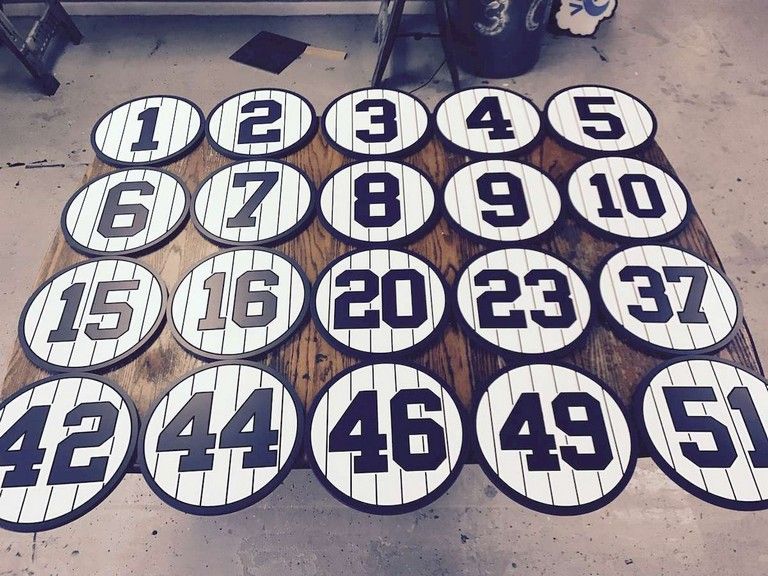 York Underground, like the London Crossrail. The PATH system is 65% tunnelled and runs underground in the Manhattan, Hoboken and Jersey City areas. Some tunnels pass under the Hudson River - they were built at the beginning of the 20th century using cast iron lining. The total length of the PATH system is 22.2 km, it consists of 13 stations and carries about 262,300 passengers per day. nine0003
York Underground, like the London Crossrail. The PATH system is 65% tunnelled and runs underground in the Manhattan, Hoboken and Jersey City areas. Some tunnels pass under the Hudson River - they were built at the beginning of the 20th century using cast iron lining. The total length of the PATH system is 22.2 km, it consists of 13 stations and carries about 262,300 passengers per day. nine0003
Click on map to view details
The New York City Subway is one of the oldest subway systems in the world, opened on October 27, 1904. At that time, the city was in dire need of solving transportation problems that arose in the 19th century, when a huge number of immigrants from Europe poured into the United States after the Civil War. Approximately from 1790 to 1860. The population of the city increased from 33 to 123 thousand people. New York was becoming an industrial and economic center, the streets were growing rapidly, along which it became increasingly difficult to move due to the large traffic congestion.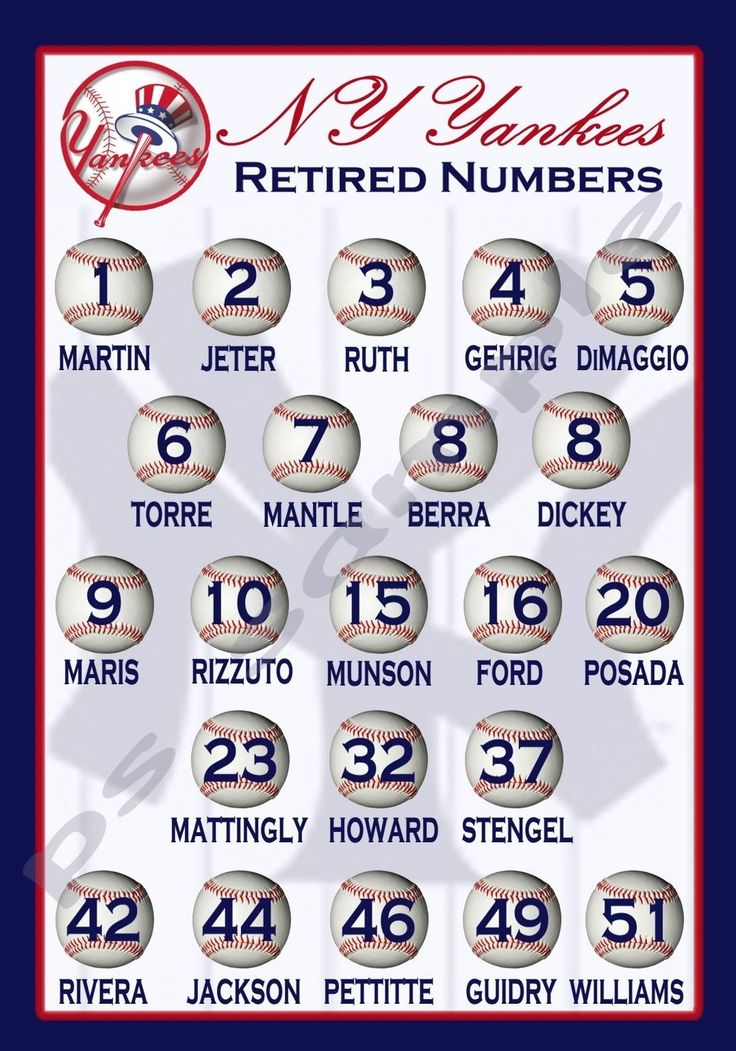 The city authorities tried to solve the transport problem by building "ground" and "overground" railway lines. nine0003
The city authorities tried to solve the transport problem by building "ground" and "overground" railway lines. nine0003
In 1868, an overhead rail line designed by C. Harvey appeared, a few years later a huge network of overground rail lines was located over Manhattan and Brooklyn, four rail lines were built on the Coney Island peninsula. But as practice has shown, "ground" and "overground" lines could not cope with the traffic. There was an obvious need for a subway that would free up the streets of overcrowded New York and unload the railroads of the elevated overpasses. nine0003
Ch. Harvey elevated railway line. Source: newruwave.com
Preceded by the opening of the first underground subway line in New York, the pneumatic railway project, the author of which Alfred Beech proposed to transport people through a tunnel resembling a "wooden pipe" in a car similar to a tube . Alfred Beech's company had previously worked on a pneumatic bellow project and was therefore able to work at shallow depths.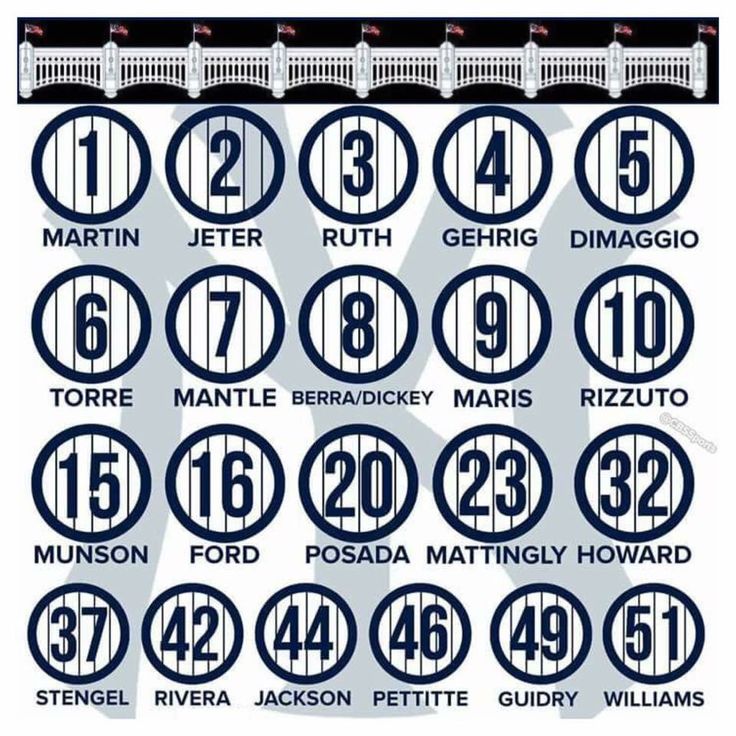 As a result, for 350 thousand dollars in New York appeared 95-meter pneumatic tunnel with a car designed to carry 22 passengers.
As a result, for 350 thousand dollars in New York appeared 95-meter pneumatic tunnel with a car designed to carry 22 passengers.
Pneumatic subway in New York. Source: newruwave.com
The project delighted New Yorkers, who could ride from a station at the intersection of Broadway and Warren Street to a dead end and back - a distance of about 1 block. A week later, the number of trips reached 11,000, and a year later, more than 400,000 people, including high-ranking officials, rode the pneumo-metro. nine0003
General layout of the pneumatic metro. Source: newruwave.com
The success of the project required development, but in 1873 there was an economic crisis, and later the city authorities switched to the idea of building overland railway lines. The first and last pneumatic metro station was located in the basement of the building and burned down in a fire in 1898.
As for the New York subway in the usual sense, the first project for its construction in New York was approved in 1898 year, it was developed by the outstanding engineer William Barclay Parsons.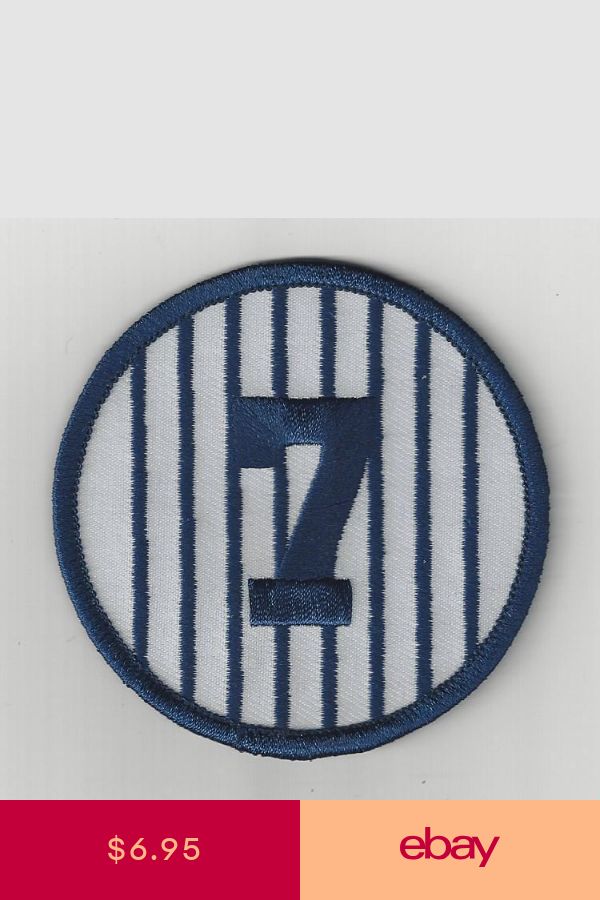 He recommended electrifying the subway, abandoning coal-fired locomotives. Not only was this source of energy cleaner, it was also calculated to be cheaper.
He recommended electrifying the subway, abandoning coal-fired locomotives. Not only was this source of energy cleaner, it was also calculated to be cheaper.
During the geological survey of Manhattan, it was found that monolithic rocks occur at a depth of 4.5 - 6 meters, and in some areas even very close to the surface. Tunneling through the monolithic rock was very expensive and slow, so Parsons made the bold decision to tunnel at a shallow depth under the city streets. This meant that in places where the topography of the surface is very sloping, the railway would have to be laid above the ground in viaducts raised on supports. At that time, metro construction technologies were far from modern and the metro had to be built literally “manually”, because of this there were many accidents, accidents and tunnel collapses. nine0003
P New York's first subway station - CityHall
In total, the first subway line in New York was built in 4 years. An English expert who was present at the opening of the metro noted that this was "one of the greatest achievements of engineering in the century.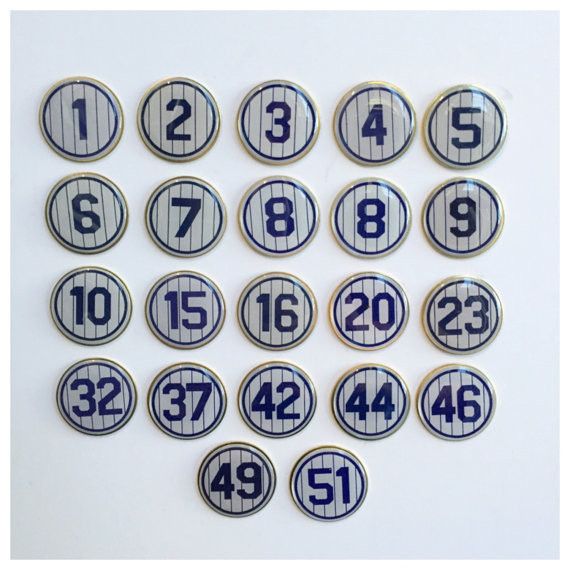 " The architectural design of the first line of the New York subway, laid from CityHall station to 145th street through Manhattan, was similar to the Budapest subway. The first CityHall station was the most beautiful, but at 19It was closed in 1945, and now it does not function, since the station has short platforms and a small turning radius, which does not meet modern standards.
" The architectural design of the first line of the New York subway, laid from CityHall station to 145th street through Manhattan, was similar to the Budapest subway. The first CityHall station was the most beautiful, but at 19It was closed in 1945, and now it does not function, since the station has short platforms and a small turning radius, which does not meet modern standards.
The first line was built by Interborough Rapid Transit (IRT), but as the subway system expanded further, competition arose from the already existing giant Brooklyn Rapid Transport (BRT), which owns ground transportation in Brooklyn. In 1913, the administration of New York entered into a double contract to continue building the subway between the IRT and BRT, but the companies significantly increased their capital at the expense of the treasury, which did not suit the city's municipality, so an independent state company Independent Subway System (IND) appeared in New York. ), responsible for the construction and operation of the subway. nine0003
nine0003
New York subway entrance. Source: hemiechinus.livejournal.com
In 1940, IRT, BRT, IND merged into a single company along with the lines they owned. IRT used narrow cars and platforms that did not fit the standards of other companies, so the former IRT routes 1 to 9 do not intersect with others, and are indicated by numbers on the New York subway map, while BRT and IND have a letter designation.
The Metropolitan Transportation Authority (MTA) has been operating in New York City since 1953 and oversees the construction and operation of the subway today. At 19In 1956, the Transportation Authority purchased a section of the railroad on Long Island, and within three years a new subway route was built, which is now marked on the map with the letter "A". The construction of the subway in New York was mainly carried out in an open way, only the latest work on the construction of new tunnels was carried out using closed technologies.
In 2014, the New York subway turned 110 years old, after many years of operation, many stations and tunnels require reconstruction and restoration work.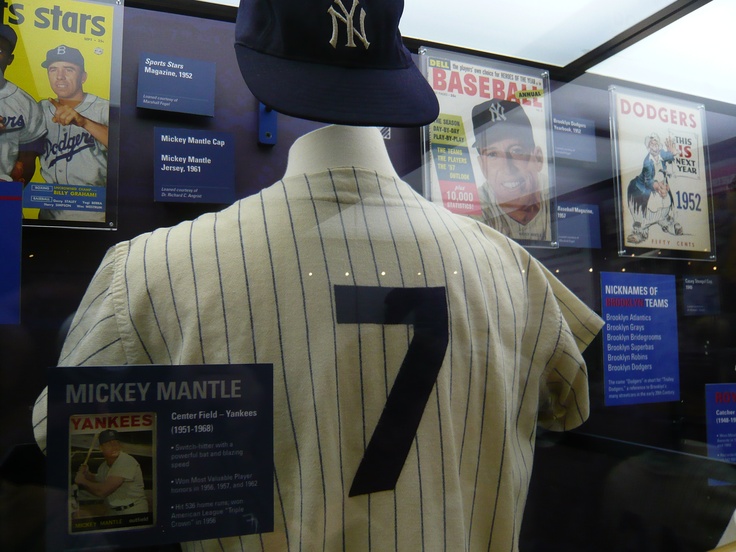 In terms of architectural design, the New York "subway" is inferior in beauty to the subways built in the USSR. Deputy Chairman of the Council of Ministers of the USSR Kozlov at the American National Exhibition in Moscow (1959) described the IRT, BMT and IND lines as "disgusting" and complained that "the metro is dirty and there is simply nothing to breathe."
In terms of architectural design, the New York "subway" is inferior in beauty to the subways built in the USSR. Deputy Chairman of the Council of Ministers of the USSR Kozlov at the American National Exhibition in Moscow (1959) described the IRT, BMT and IND lines as "disgusting" and complained that "the metro is dirty and there is simply nothing to breathe."
The thing is that the approach to the construction of the New York subway was different from the Soviet one, it was initially purely utilitarian. There are no underground palaces in New York, and many New York subway stations look shabby from old age. But by 2014, about 100 New York subway stations had been renovated, with ramps and lifts for people with disabilities installed. nine0003
Drainage system problems remain - in 1992 about $357 million was allocated to replace pumps, but the transit system still works intermittently, and in heavy rain water can even get into subway cars.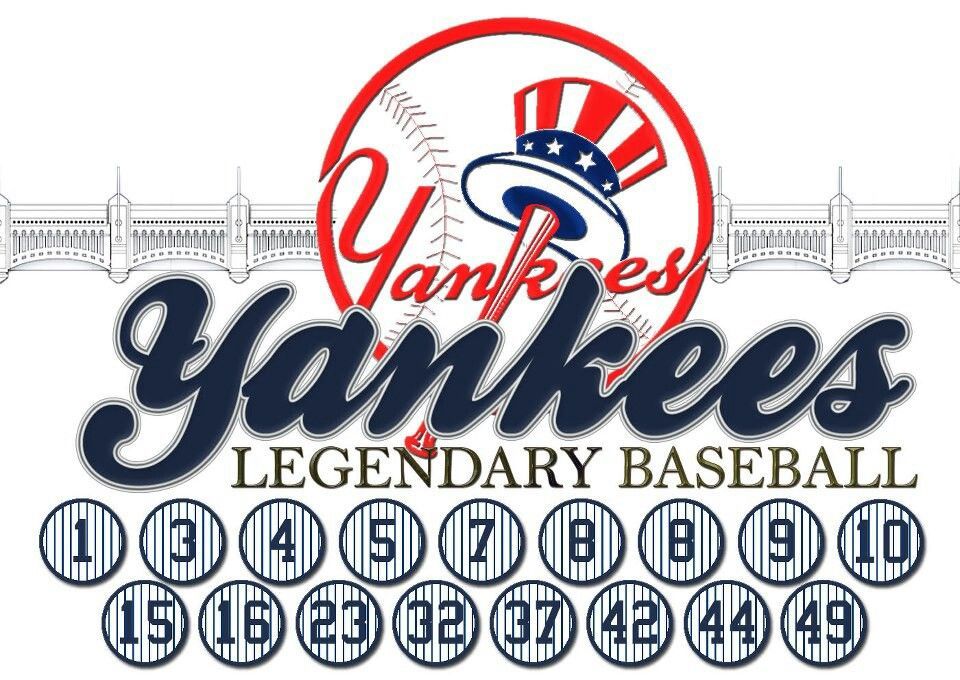 When Hurricane Sandy approached New York in October 2012, the subway was closed in the city, 7 lines were flooded, and until 2013 the Department of Transportation eliminated its consequences.
When Hurricane Sandy approached New York in October 2012, the subway was closed in the city, 7 lines were flooded, and until 2013 the Department of Transportation eliminated its consequences.
In general, the pace of construction of the New York subway was low, for a long time there were practically no works on the construction of new stations or lines. Only at 1988-1989 6 stations were built. In 2001, construction was completed on a tunnel run connecting 21st/Queensbridge station to a line running under Queens Boulevard.
Most of the underground New York subway tunnels pass under Manhattan and they are shallow, the deepest tunnel runs under the East River, and in other areas the lines are located on flyovers. The elevated sections built in the Brooklyn and Bronx areas became part of the modern New York subway system. In total, about 153 New York subway stations are located on overpasses and 38 stations are ground, 277 are located underground. The deepest station is 191st Street is located at a depth of 55 meters.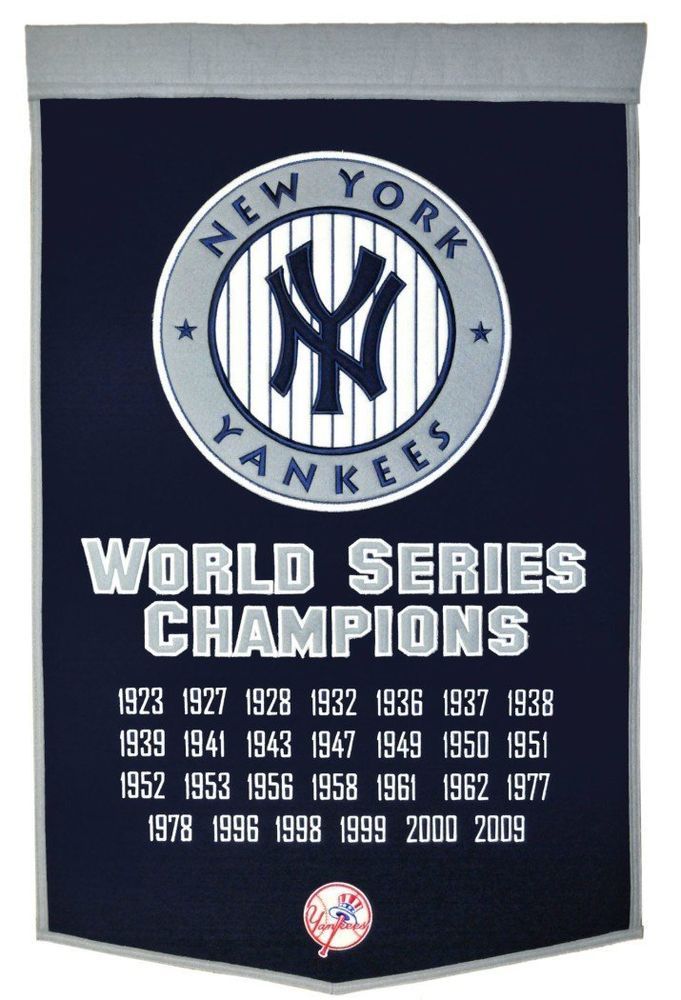
Construction of the main East Side Access tunnel. Source: MTA/Patrick Cashin
A distinctive feature of the New York City Subway is that trains are organized according to routes, each route can pass through one or more subway lines. In addition, trains are divided into local and express, local trains travel with all stops, respectively, the express stops at several stations, so there are 3-4 tracks on one line. Also in Queens, Manhattan and Brooklyn, “creak-stop” routes are organized, that is, a pair of trains during rush hour travel along the same route, but stop alternately at each station. nine0003
New York subway standard gauge: 1435 mm, 625 watt conductor rail. On average, the length of the platform in the New York subway is from 150 to 180 meters. The New York subway operates around the clock and rightfully deserves the title of the largest - not only in the number of stations, but also in the number of subway cars. In total, in 2014, the number of cars in the New York "subway" was 6400 units, their maximum number in the train was 11. Source: timeout.com
Source: timeout.com
The New York City Transportation Authority (MTA) is currently implementing a number of ambitious projects. The largest project is the construction of the East Side Access line, which will connect the New York City subway with the railroad, as a result of which the Long Island train will connect to Grand Central Station in New York, and from Manhattan the subway will connect to the Airport John Kennedy. In total, $ 8.4 billion was allocated for this project, MTA plans to complete it by August 2019of the year. Another project that is being prepared for implementation is the construction of Second Avenue.
The project was approved in 1929, but it was not implemented for economic reasons, only in 1975 the construction of the line began, but the work was also suspended. Starting from 2007, work on the construction of the line was resumed again. The first launch section of Second Avenue will consist of 3 stations.